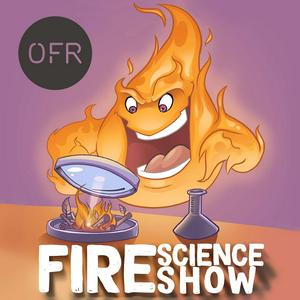196 - Fire spread through external walls pt. 1 with FSRI
In this podcast episode, we host Rebekah Schrader, Joseph Willi, Daniel Gorham and Gavin Horn, all from the FSRI, to cover their recent experimental research on fire spread through external walls. This is part 1 of the interview - the background, rationale and context. In part 2, we cover the experiments themselves, findings and actionable guidance from the experiments.This research is conducted within the context of structure-to-structure fire spread, potentially in urban conflagration scenarios. The subject is most relevant, as when wildfires meet urban areas, they transform into something far more destructive – "wildfire-initiated urban conflagrations." These events devastate entire communities as fire spreads rapidly from structure to structure, overwhelming firefighting resources and leaving widespread destruction in their wake.The Fire Safety Research Institute has embarked on a comprehensive research initiative examining exactly how these conflagrations develop and spread. What started as a response to their advisory board's call to action in 2018 has evolved into a groundbreaking exploration of the complex interactions between wildland fires and the built environment.We break down the three primary mechanisms of fire spread – radiant heat, direct flame contact, and firebrands – while highlighting specific vulnerabilities in modern construction, particularly windows and cladding systems.What makes this research particularly valuable is how it bridges traditionally separate disciplines: wildfire science and structural fire engineering. The team explains how they've translated complex wildfire scenarios into controlled laboratory experiments that yield actionable data for improving building codes and community design.Whether you're a fire safety professional, community planner, or homeowner in a wildfire-prone region, this conversation offers crucial insights into how we can create more resilient communities in the face of this growing threat.In the next episode, we will cover in depth the details of three experiments mentioned today.Find the research papers at:https://onlinelibrary.wiley.com/doi/10.1002/fam.3278https://link.springer.com/article/10.1007/s10694-024-01685-8https://link.springer.com/article/10.1007/s10694-024-01656-zAnd additional resources at:https://fsri.org/research-update/journal-article-reports-heat-transfer-through-different-window-constructionshttps://fsri.org/research-update/journal-article-investigates-role-residential-siding-materials-spread-exteriorThank you to the SFPE for recognizing me with the 2025 SFPE Fire Safety Engineering Award! Huge thanks to YOU for being a part of this, and big thanks to the OFR for supporting me over the years.----The Fire Science Show is produced by the Fire Science Media in collaboration with OFR Consultants. Thank you to the podcast sponsor for their continuous support towards our mission.
